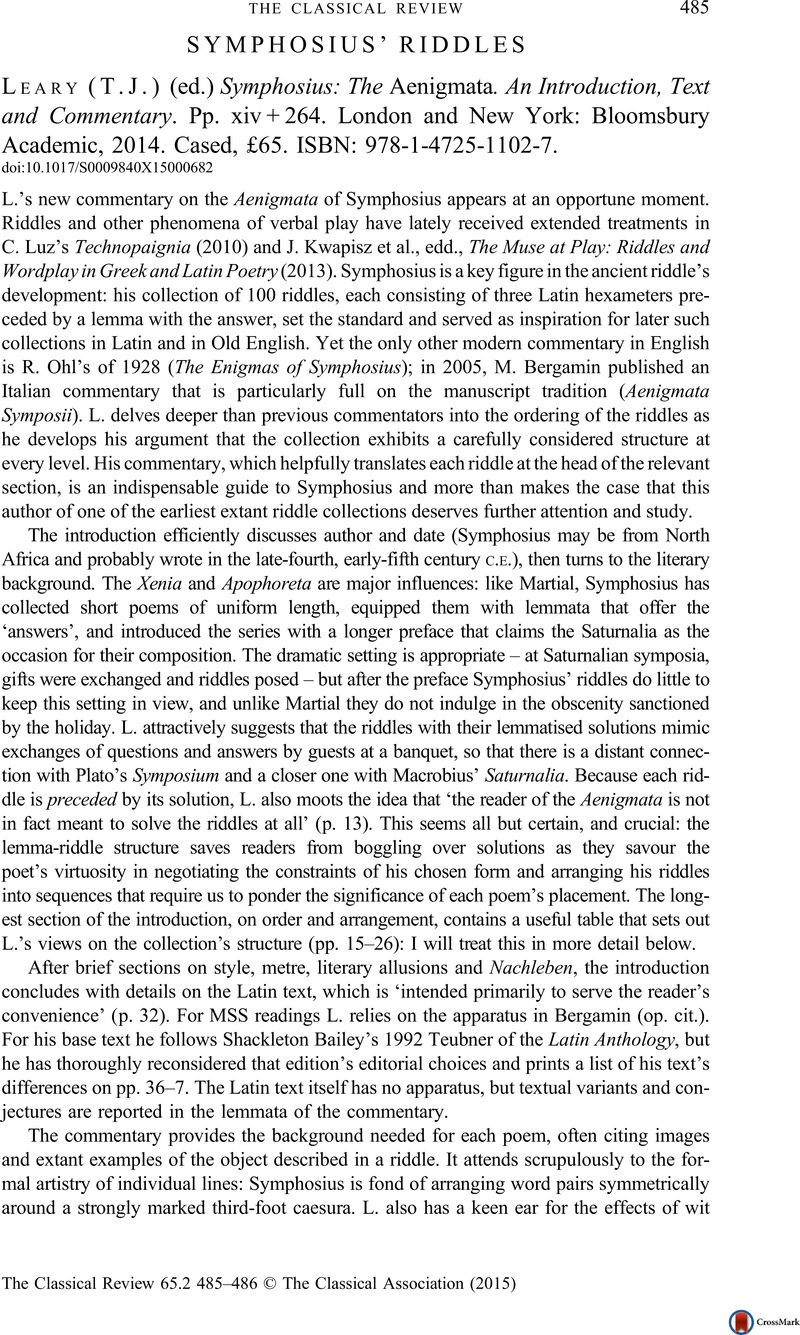No CrossRef data available.
Published online by Cambridge University Press: 05 August 2015

1 L. once uses his ordering principles to intervene substantially in the text, when he shifts the riddle on the Phoenix, 31 in the transmitted sequence, two places earlier to 29, so that it can conclude a thematic sub-group on birds. To my mind the ordering principles are too flexible to provide a firm basis for this sort of change (restrictions of space prevent me from treating the matter in detail here).
2 The list is not entirely accurate: Aenig. 31 (30) (‘Louse’) ought to be included because its first person is spoken not by the riddle's subject, but by an undefined ‘we’; the problematic Aenig. 96 does not belong if, with L., we understand its first-person singular forms as spoken by the ‘Words’ that are the riddle's subject, ‘acting as a single entity’ (p. 241).